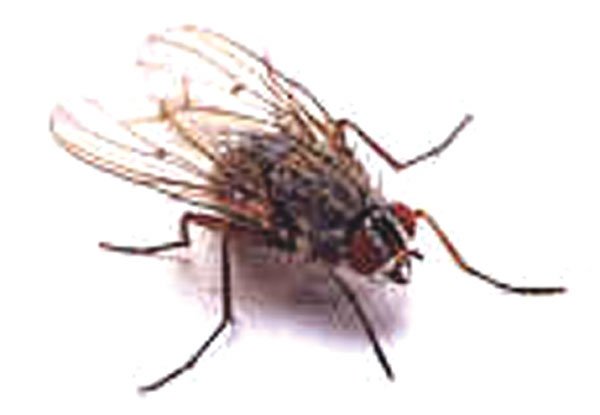The days of better living through chemistry are catching up with
us. What we once thought were helpful chemicals that made our lives
easier
– from aerosol pesticide sprays to grout cleaner that shows
results in minutes – we are now finding that household chemicals
can accumulate in the food chain, in the environment and in our
bodies, resulting in illnesses, allergies and reproductive
disorders.
The days of better living through chemistry are catching up with us. What we once thought were helpful chemicals that made our lives easier – from aerosol pesticide sprays to grout cleaner that shows results in minutes – we are now finding that household chemicals can accumulate in the food chain, in the environment and in our bodies, resulting in illnesses, allergies and reproductive disorders.
Those chemicals no longer just pose a hazard to children and pets that might get into the household cleaning products stash, some of them pose a threat to adults who use them as directed. So it’s no wonder there are numerous resources out there for people looking for a more natural way to keep their homes clean and to take care of the little things that crop up every day – carpet stains, an ant infestation and more.
While you may not feel comfortable going all the way, replacing your Comet with baking soda, and your Pine Sol with tea tree oil in hot water, you can shop for “green” cleaning products to use in your home. These are usually biodegradable and made of chemicals that aren’t as harsh as those you might find in other cleaning products. And there are some things you can do here and there to avoid using chemicals at all, and at the same time keep your house clean.
Here are a few of the things you can try at home.
Around the house
Carpet stains: Mix equal parts white vinegar and water in a spray bottle. Spray directly on the stain, let the mixture sit for several minutes, and clean with a brush or sponge using warm soapy water.
Source: Eartheasy
Carpet deodorizer: Sprinkle carpet liberally with baking soda. Wait 15 minutes longer, then vacuum. For musty rugs that have been sitting in the attic, leave the baking soda overnight.
Source: Environmental
Media Services
Water rings on wood: Water rings on a wooden table or counter are moisture that gets trapped under the finish. Apply toothpaste or mayonnaise to a damp cloth and rub into the ring. Once the ring is gone, buff the entire wood surface.
Source: Eartheasy
Mothballs: Mothballs are made of paradichlorobenzene, which is harmful to liver and kidneys. There are a couple alternatives to regular ol’ stinky mothballs.
Put ‘aromatic cedar’ chips in a cheesecloth square. Put lavender, rosemary, vetiver and rose petals in a sachet. Toss dried lemon peels into drawers or tie them up in cheesecloth and hang in the closet.
Source: Eartheasy
Bathroom mold: Mix one part hydrogen peroxide (3 percent) with two parts water in a spray bottle and spray on areas with mold. Wait at least one hour before rinsing or using shower.
Source: Eartheasy
Unclogging drains: There are a few things you can try, such as plunging the sink or using a drain snake. You can also make your own drain-clearing compound.
Pour one or two handfuls of baking soda followed by ½ cup white vinegar down the drain pipe and cover tightly for one minute. The chemical reaction between the two substances will create pressure in the drain and dislodge the obstruction. Rinse with hot water.
Pour ½ cup salt and ½ cup baking soda followed by lots of hot water.
Source: Environmental Media Services
Toilet bowl cleaner: Solid toilet bowl deodorizers contain paradichlorobenzene, which causes cancer in laboratory animals. Some toiletbowl-cleaning products contain acids (read labels). If acids are mixed with a cleaner containing chlorine, toxic chlorine gas is released.
Flush to wet the sides of the bowl. Sprinkle 1/2 cup of borax around the toilet bowl, then drizzle with vinegar. Leave for several hours or overnight before scrubbing with a toilet brush.
For stains in toiletbowl, try a paste of lemon juice and borax. Let sit about 20 min. and scrub with bowl brush.
Source: U.S. EPA
Pests
Flies: Hang a pine bough in the kitchen: flies dislike pine oil. Whole or ground cloves in a small muslin teabag also makes a good fly-repelling hanging sachet.
Source: Annie B. Bond,
Care2 Healthy Living Channels
Fleas and ticks: Put brewer’s yeast or garlic in your pet’s food. Sprinkle fennel, rue, rosemary or eucalyptus seeds or leaves around animal sleeping area.
Source: U.S. EPA
Ants: Mix white pepper and sage and sprinkle liberally where ants enter the house.
Source: Haley’s Hints
Stains
Fat and oil: For removing fat or oil stains, such as those from gravy or salad dressing, rub cornstarch, cornstarch powder or even talcum powder into the stain, let it sit for at least 20 minutes, and then brush off the powder residue with a dry washcloth or soft dry brush.
Source: Annie B. Bond,
Care2 Healthy Living Channels
Fruit: For removing stains from fruit, including wine and tomato sauce stains, pour boiling water over them in a bowl or basin. Do this only on washable fabrics.
Source: Annie B. Bond,
Care2 Healthy Living Channels
Ink: For removing an ink stain, use an eye dropper to drip some rubbing alcohol on it, followed by vinegar. Coat with salt. Repeat if necessary and rinse with hot water.
Source: Martha
Stewart Omnimedia
Other stains: For removing protein-based stains such as blood and sweat or tannin-based stains such as coffee or tea, rinse them out with mild soap or shampoo in cold water. Wash as you normally would.
Source: Annie B. Bond,
Care2 Healthy Living Channels
Resources
Here are some books and Web sites with many more helpful household tips for you to choose from:
• “Haley’s Hints,” by Graham Haley
• “Clean House, Clean Planet,” by Karen Logan
• “Better Basics for the Home: Simple Solutions for Less
Toxic Living,” by Annie Berthold-Bond
• Environmental Media Services:
www.ems.org/household_cleaners/alternatives.html
• Eartheasy: www.eartheasy.com. Click on “Live”
• Care2Connect: www.care2.com. Click on “Healthy Living.”
• U.S. Environmental Protection Agency:
www.epa.gov/region08/library/solidwaste.html
For a list of chemicals to avoid or use with extreme care, and more information about what chemical cleaning products do, visit the U.S. Department of the Interior Web site at: www.doi.gov/greening/sustain/trad.html.














